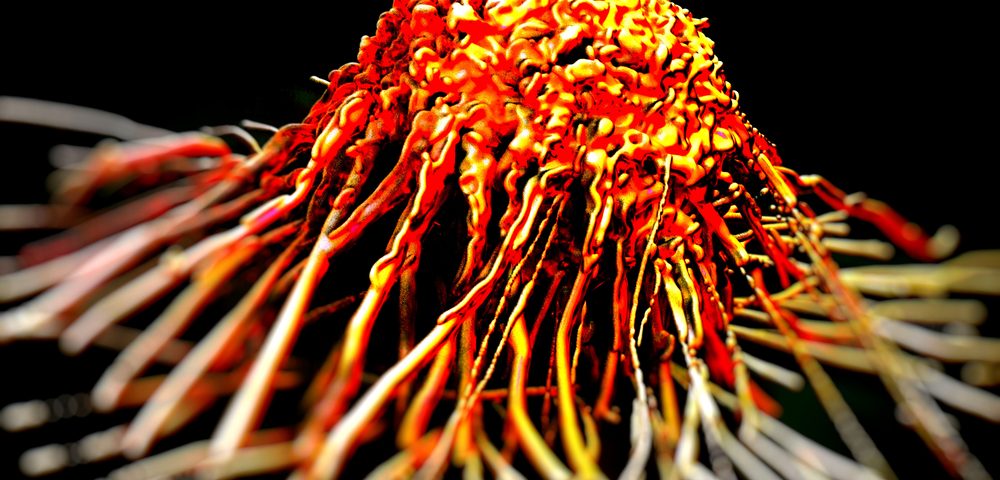The environment that surrounds breast cancer cells is crucial to the cells migrating to other parts of the body and taking root, according to a study arguing that new treatments could be developed around a molecule that is part of the process.
The molecule, DDR2, is involved in communication between migrating cancer cells and the mesenchymal stem cells surrounding them, and paves the way for the tumor to settle elsewhere.
The study, “Mesenchymal Stem Cell-Induced DDR2 Mediates Stromal-Breast Cancer Interactions and Metastasis Growth,” appeared in the journal Cell Reports.
“A role for the tumor microenvironment in metastasis [the spread of cancer] is being unraveled,” Celina Kleer, MD, a professor of Pathology at the University of Michigan Medical School and senior author of the study, said in a press release. “If we can understand these mechanisms, we can find ways to inhibit them and prevent metastasis.”
Kleer’s team believed the molecular and cellular environment surrounding the spread of cancer could offer clues to how and why tumor cells take root elsewhere.
The team examined healthy tissue from breast cancer patients whose cancer was spreading.
Among the cells near the tumors were mesenchymal stem cells. Earlier research had shown that this cell type influences cancer growth. Kleer’s team discovered the stem cells are involved in the spread of cancer as well.
Both the cancer cells and the stem cells express DDR2, a factor known as a receptor tyrosine kinase. Researchers learned how important the factor was by deleting it from lab-grown cells and mice.
When DDR2 was present, cancer and stem cells lined up in a neat pattern that included collagen. When the factor was absent, the cancer cells were disordered, and far fewer migrated.
“We discovered that DDR2 mediates the communication between mesenchymal stem cells and cancer cells,” said Kleer, director of the Breast Pathology Program at the University of Michigan Comprehensive Cancer Center.
“When we inhibit this receptor in the mesenchymal stem cells, it tricks the cancer cells. The cells do not align, they do not migrate and they do not metastasize efficiently. This suggests a possible therapeutic target,” she said.
Blocking DDR2 might reduce the risk of metastasis, she added.
There is no known therapy for blocking DDR2 in humans, but treatments against other receptor tyrosine kinases exist, suggesting it may be possible to create such a compound. For the moment, the research team will continue studying DDR2 activation with an eye toward learning how its signaling allows metastasis formation.
“Our goal is to identify a way to interrupt breast cancer metastasis growth and invasiveness, either to prevent metastases from forming or to keep them at bay when they do develop. The microenvironment is a rich opportunity to better understand why cancer metastasizes and begin to attack that process,” Kleer said.

